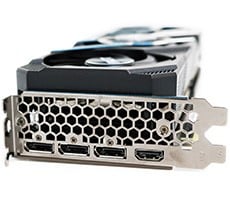Arm Cortex-A76 And Mali-G76 Architectures For Next-Gen Mobile Revealed
Arm sees significant potential in VR and AR. But even if VR and AR fizzle out in the consumer space, they have already found solid industrial applications. AR solutions in particular can augment workers with informational overlays to improve productivity and yield tangible ROI. VR and AR necessitate high resolutions, rapid frame rates, low latencies, and efficient AI to create a compelling and immersive experience, however. Arm's Mali-G76 and V76, along with the new NPU, should be up to the task of satisfying these high computational demands according to Arm.
Security is at the forefront of Arm's designs as well. In the past couple of years, it has adopted a new security manifesto, expanded its TrustZone technology to embedded IoT devices, and released its Platform Security Architecture to improve security designs at the scale of the IoT.
Arm also made no bones about its ongoing effort to improve Spectre and Meltdown defenses. It has already developed and released kernel and software patches for licensees to incorporate. However, Arm does not necessarily have control over whether the patches are ever deployed or not. To that end, Arm is continuously updating their designs to improve resilience against any new variants which may emerge. Arm maintains a repository of exploit related updates here.
The Arm Cortex-A76, and Mali-G76, and V76 designs are all expected to hit production silicon as early as the end of this year to power the next generation of mobile devices slated to arrive in 2019.










